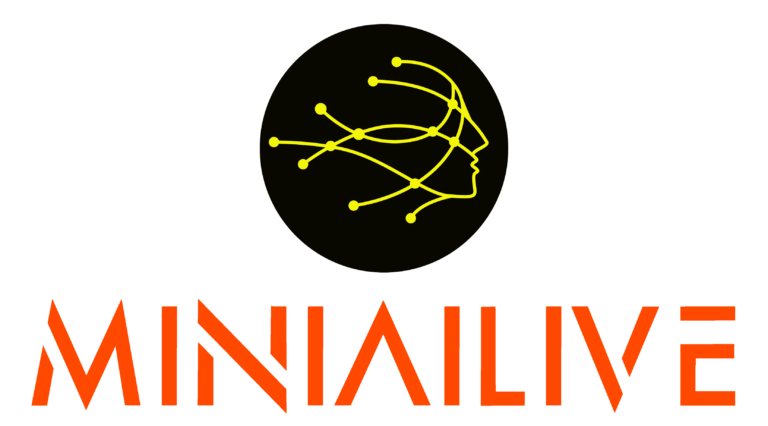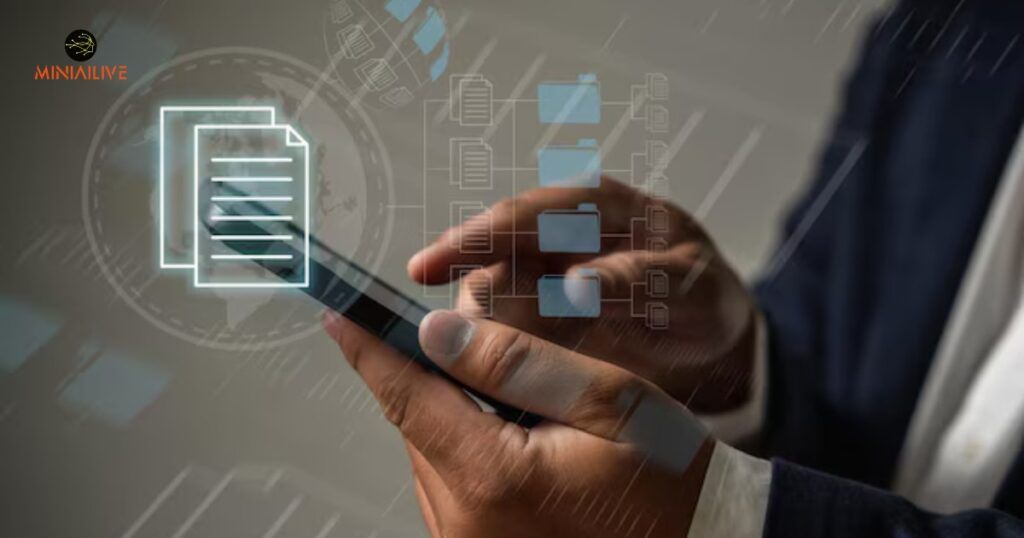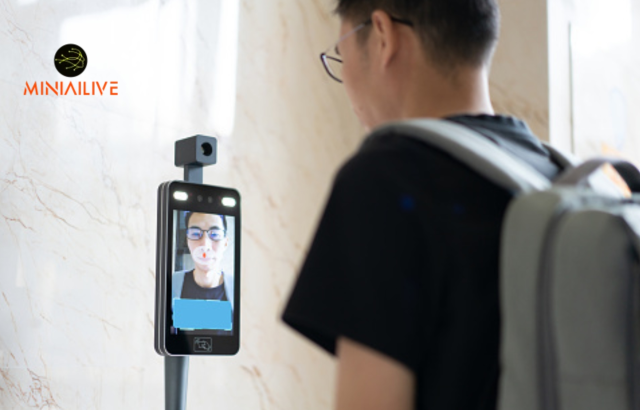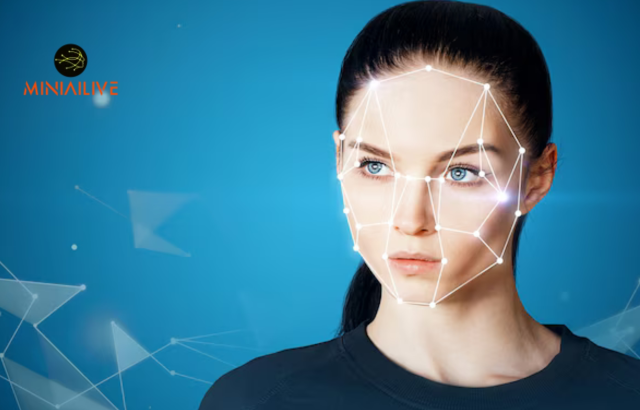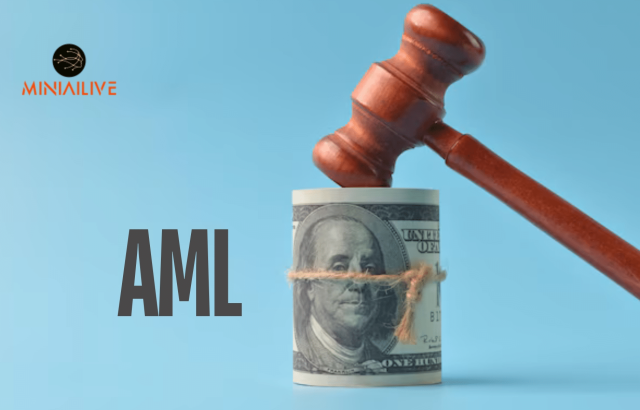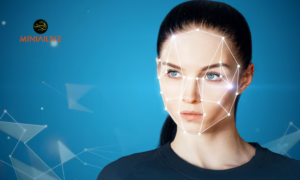The ID Document verification technology authenticates the validity of physical and digital documents. It ensures that personal and sensitive information remains secure.
In today’s digital age, document verification serves as a critical component for businesses in various sectors, including banking, healthcare, and government services. It utilizes a mix of artificial intelligence, machine learning, and pattern recognition to scrutinize documents for authenticity. This technology helps combat identity theft and reduces the risk of fraud by verifying the legitimacy of identification papers, contracts, and certificates.
Its importance has grown exponentially with the increase in online transactions, making it an indispensable tool for organizations looking to safeguard their operations and protect their customers’ information. As industries continue to digitize, the significance of robust document verification processes becomes even more paramount.
Evolution Of Document Verification
People used to check documents by hand. This took a lot of time. Now we use computers to do it fast and safely. Let’s see how things changed over time.
From Paper To Pixels
Documents changed from paper to digital. Long ago, everyone used paper. They wrote on it and kept it safe. Then computers came. Now we keep documents on computers. This change was big.
- First, we had paper files in big rooms. It was hard to find anything.
- Next, we made those papers into pictures with scanners. This saved space.
- Then, we started storing the pictures on computers. This was faster.
- Now, we use special software to check these digital documents. It’s very smart.
Milestones In Document Verification Technology
| Year | Technology |
| 1970s | Magnetic Ink Character Recognition (MICR) |
| 1980s | Optical Character Recognition (OCR) |
| 2000s | Biometric Verification |
| 2010s | Blockchain for Secure Verification |
| 2020s | Artificial Intelligence and Machine Learning |
Each step was important. MICR helped banks read checks. OCR made text on paper into text on computers. Biometrics use body parts like fingerprints to check who you are. Blockchain made sure documents did not change. Artificial Intelligence (AI) is smart like humans. It learns by itself to get better at checking documents.
Key Components Of Modern Document Verification Systems
The digital world constantly evolves, necessitating robust document verification methods. With sensitive information and transactions moving online, security becomes paramount. High-tech verification systems act as gatekeepers, ensuring everyone is who they claim to be. Let’s explore the key components that form the bedrock of modern verification systems.
Optical Character Recognition (OCR)
Optical Character Recognition, or OCR, serves as the eyes of document verification technology. It scans texts on identity documents like passports, driver’s licence, and utility bills. OCR isn’t just quick; it’s critical for preventing fraud. This component can:
- Extract text from various backgrounds and formats.
- Ensure data accuracy during the verification process.
- Convert scanned documents into searchable and editable
OCR technology has evolved, easily deciphering complex fonts and layouts. Security layers integrate with OCR, heightening system integrity. This tool is essential for automated data entry and compliance checks.
Biometric Authentication
Biometric Authentication stands as the bodyguard of personal identity. Using unique biological traits, it offers a layer of safety that is tough to breach. This verification component uses features that are hard to replicate, such as:
| Biometric Feature | Function |
| Fingerprint Scanning | Matches prints to database entries. |
| Facial Recognition | Analyzes facial features for matches. |
| Retina Scans | Identifies patterns in the eye’s retina. |
Thanks to advancements, these systems can quickly verify a person’s identity. Biometric authentication combines with other verification layers, ensuring robust protection. It’s essential in systems where security is non-negotiable.
Enhancing Security Measures
Document verification technology plays a crucial role in safeguarding personal data. It blocks unauthorized access and keeps sensitive information secure. This technology is becoming indispensable in our digital world.
Combating Identity Theft
Identity theft is a growing concern. Thieves steal personal details to commit fraud. Document verification systems are designed to fight this problem. They verify identities swiftly and accurately, which protects us all.
- Real-time checks spot fake IDs quickly.
- Biometric verification ensures that the person holding the ID is its rightful owner.
- Data encryption and secure servers prevent leaks of personal information.
Integrating Blockchain
Blockchain technology adds another layer of security to document verification. Its decentralized nature makes data near-impossible to tamper with.
| Blockchain Feature | Security Benefit |
| Decentralization | No single point of failure. |
| Encryption | Highly secure data transactions. |
| Immutable records | Verifiable and unchangeable history. |
Integrating blockchain means greater trust in verified documents. It ensures that once data is verified, it remains protected and pure.
User Experience And Accessibility
Let’s talk about how users interact with document verification technology. Good tech makes life easy. It’s true for document checks too. Easy document verification lets users enjoy your service without stress. Now, let’s see how it works smoothly and helps everyone.
Streamlining Document Verification Processes
Time is precious. So, a smooth verification process is key. Here’s what good tech does:
- Quick Scans: Just snap a pic, and the tech checks it fast.
- Smart Fill: It pulls info from documents to fill forms.
- Error Checks: It spots mistakes so you can fix them right away.
Less effort, better accuracy. That’s the promise.
Mobile Compatibility
Phones are everywhere. We use them all the time. So, document verification should work well on mobiles too.
| Feature | Benefit |
| Mobile-Friendly Design | Easy to use on small screens. |
| Camera Integration | Use your camera to scan documents. |
| Responsive Forms | Forms fit your screen perfectly. |
These features make sure everyone can use verification tech. No one is left out. Accessibility matters!
Document Verification In Various Industries
Document verification technology plays a key role in many sectors. We rely on accurate data to stay safe and efficient. This technology helps confirm the authenticity of documents. Let’s explore how different industries use these tools.
Banking And Finance
In banking, trust is everything. Document verification ensures that trust. Here’s how it helps:
- Preventing Fraud: Checks customer IDs to stop illegal activity.
- Improving Compliance: Meets legal requirements easily.
- Enhancing Customer Experience: Quick checks mean faster service.
Healthcare Record Management
Healthcare needs correct records to care for patients. Document verification is crucial. Techniques include:
| Technique | Benefit |
| Electronic Records: | Keeps patient data secure. |
| Verification at Admission: | Guarantees patient identity. |
| Data Integrity Checks: | Ensures records are untouched. |
Regulatory Compliance And Standards
Document verification technology is a cornerstone for upholding legal standards. It ensures that businesses meet stringent regulatory demands.
Global Data Protection Regulations
Global data protection laws like GDPR dictate how personal data must be handled. Integration of document verification technology must comply with these regulations to safeguard privacy and maintain trust.
- Consent requirement for data processing
- Strict control over data access and sharing
- Protocols for data storage and deletion
Businesses worldwide must adapt to these rules to operate smoothly and avoid penalties.
Industry-specific Compliance
Distinct industries face unique compliance requirements. Document verification technology must reflect these necessities.
| Industry | Regulatory Body | Key Compliance |
| Finance | FATF, FINRA | AML, KYC |
| Healthcare | HIPAA | PHI Protection |
| Air Travel | IATA | Secure Passenger Data |
Adherence to industry-specific regulations protects against legal consequences and reinforces credibility.
Advancements In AI And Machine Learning
Document verification technology has taken huge strides thanks to AI and Machine Learning. These advancements are shaping a future where verifying documents is faster, safer, and smarter. Let’s explore how AI is revolutionizing this field.
Automated Fraud Detection
The power of AI has significantly improved fraud detection in document verification. Machine learning algorithms can now analyze patterns and anomalies in data. This leads to the quick identification of fraudulent activities. With these technologies, systems catch forgeries that might escape the human eye.
- Faster processing: Automated systems verify documents in mere seconds.
- Greater accuracy: AI reduces human error, enhancing reliability.
- Complex pattern recognition: AI algorithms detect subtle fraud signs with ease.
Continuous Learning Systems
Machine learning thrives on data. With continuous learning, verification systems constantly evolve. They adapt to new forgery methods and improve over time.
| Feature | Benefits |
| Self-improvement: | Systems learn from each interaction to become more efficient. |
| Adaptability: | They adjust to emerging threats without human intervention. |
| User Experience: | Continual updates lead to a smoother verification process. |
Organizations are already benefiting from these AI-driven enhancements. They’re making document verification an airtight process in our digital world.
Challenges In Document Verification
Document verification is a critical security measure. Yet, it faces several hurdles. Businesses and individuals alike must understand these challenges. It is essential for maintaining data integrity and privacy. Let’s explore the key issues surrounding this technology.
Dealing with Forged Documents
Dealing With Forged Documents
Fraudulent documents can undermine any verification process. With today’s technology, forgery has become sophisticated. Identifying fake documents is a constant struggle. Verification systems must evolve to stay ahead of counterfeiters.
- Complex security features in genuine documents make detection tricky.
- Advanced software is needed to discern authenticity.
- Updating systems regularly is crucial to combat forgery.
Privacy and Data Security
Privacy And Data Security
Protecting sensitive information is paramount. Users entrust organizations with their personal data. Breaches can lead to severe consequences.
- Data encryption safeguards against unauthorized access.
- Limited data retention policies reduce exposure risks.
- Regular audits ensure ongoing security compliance.
| Challenge | Impact | Solution |
| Forgeries | Trust in the system is compromised. | Implement cutting-edge detection technologies. |
| Privacy Concerns | Risk of personal data leaks. | Deploy robust encryption and strict policies. |
Case Studies: Successful Implementations
‘Case Studies: Successful Implementations’ shines a light on how document verification technology has transformed various sectors. Businesses and governments worldwide have harnessed the power of this technology. They improve security, increase efficiency, and provide superior customer service. Dive into these real-world examples to understand the full potential of document verification solutions.
E-government Initiatives
Digital transformation in the public sector is often challenging. Document verification technology has proven pivotal for e-Government initiatives globally. Some remarkable successes include:
- Estonia’s e-Residency Program: Secure digital identity for global citizens.
- India’s Aadhaar System: Unique biometric IDs for over a billion people.
- Singapore’s SingPass: Enhanced online services with MyInfo’s data platform.
Fintech Solutions
Fintech innovators are at the forefront, incorporating document verification to safeguard transactions. Customers experience seamless onboarding and transactions, proving these solutions are second to none. Here’s how document verification stands as a game-changer in the fintech space.
| Company | Success Story |
| Revolut | Instant verification process for millions of users. |
| Stripe | KYC checks are streamlined for businesses. |
| PayPal | Fraud reduction, user trust amplified. |
The Human Element
The advent of document verification technology has revolutionized the way organizations approach security and authenticity. Yet, the ‘The Human Element’ remains a critical component of this sophisticated process. Understanding the roles humans play in technology-driven systems uncovers the irreplaceable value of human insight and expertise in maintaining the integrity of document verification.
Manual Oversight Necessity
While algorithms and machine learning offer precision, human oversight is vital for quality control. Experts detect nuances and context that technology may overlook. Manual verification acts as a fail-safe, ensuring errors caught by the human eye do not compromise security.
- Double-check algorithmic outputs
- Recognize forgeries beyond the digital scope
- Apply contextual understanding to anomalies
Training And Employment
Document verification technology creates demand for skilled professionals. Training for these roles focuses on expertise in data analysis and fraud detection. Continuous learning keeps teams ahead of evolving threats.
| Training Focus Area | Skills Developed |
| Data Analysis Understanding | Interpret complex patterns |
| Fraud Detection Techniques | Identify subtle discrepancies |
| Tool Proficiency | Handle verification software |
Future Of Document Verification
The Future of Document Verification opens a new chapter in security and authenticity. With rapid advancements, verification processes are about to leap far beyond what’s currently possible. Technology will redefine trust and efficiency in document-related operations.
Predictive Technology Trends
Document verification technology continues to evolve. It adapts to new threats and user demands. Let’s explore future trends:
- Artificial Intelligence: AI will dominate, offering smarter and faster checks.
- Biometric Authentication: This will add an extra layer of security.
- Blockchain Integration: Expect decentralized storage for verified documents.
- Mobile-First Solutions: Verification will become even more convenient.
Potential Ethical Concerns
With new technologies come new ethical challenges.
| Concern | Details |
| Data Privacy | How to protect personal information? |
| Consent | How will users agree to data usage? |
| Biased Algorithms | How to prevent unfair outcomes? |
| Transparency | How to make processes clear to users? |
Bridging The Digital Divide
Document Verification Technology promises a future where everyone can participate in the digital economy. Yet, a significant gap exists between those who have access to such innovations and those who don’t. Bridging this digital divide presents a unique challenge. It requires a blend of advanced technology and a deep commitment to reach all corners of society.
Reaching Under-served Populations
To truly bridge the gap, document verification technology must find its way to under-served communities. These include remote areas, low-income neighborhoods, and regions with less technological advancement. By simplifying the verification process and making it accessible via basic mobile phones or community centers, we ensure no one is left behind.
- Mobile access: Simple apps that work on all types of mobile phones.
- Community centers: Local hubs equipped with the necessary technology.
- Offline solutions: Options for areas with limited internet connectivity.
Inclusive Technology Design
Inclusivity in technology design plays a pivotal role in addressing the digital divide. Document verification solutions must be user-friendly and accommodate diverse needs. Developers achieve this by considering various languages, literacy levels, and cultural contexts during the creation process.
| Consideration | Implementation |
| Languages | Multi-language support |
| Literacy | Icons and voice guidance |
| Cultural context | Culturally aware interfaces |
Integration With Other Systems
Document verification technology works best when it connects smoothly with other systems. Doing so speeds up processes and ensures accuracy. Let’s dive into what it takes to make these integrations work seamlessly.
Interoperability Challenges
Linking different systems poses hurdles. Key challenges include:
- Different data formats: Standardizing data is a must.
- Varied protocols: Systems need a common language to talk.
- Security concerns: Safe data transfer protocols are vital.
Solutions range from using APIs to adopting universal standards.
Unified Digital Identities
A single digital ID clears many integration issues. It allows for:
| Advantages | Examples |
| Improved efficiency: Faster checks | e-Passports |
| Better experience: Less user input | Single sign-on |
Trust frameworks and shared ledgers like blockchain support unified IDs.
Impact Of Deepfakes And Synthetic Media
The rise of artificial intelligence has brought about sophisticated deep fakes and synthetic media. These high-tech facsimiles raise serious concerns for document verification processes. The authenticity of documents, from identification papers to financial records, is at stake. Let’s explore how this technology challenges current verification methods.
Detecting Advanced Forgeries
Advanced forgeries created using deepfake technology are hard to spot. Traditional security measures struggle to keep up. This creates a pressing need for better detection tools. Some modern solutions involve machine learning algorithms. These systems are trained to spot inconsistencies and anomalies that the human eye might miss.
- AI-Powered Analysis: Scans for irregular patterns in documents.
- Biometric Verification: Compares physical traits with digital records.
- Blockchain Technology: Provides an immutable record of document histories.
Emerging Technological Arms Race
As verification tools evolve, so do the techniques used to create forgeries. This situation mirrors an arms race where both sides are constantly looking for an advantage. Innovators in document verification must always be one step ahead. They Design systems that not only detect current forgeries but can also adapt to future threats.
| Type of Threat | Technology in Response |
| Deep Fake Videos | Motion Analysis Algorithms |
| Synthetic Voice | Speech Pattern Analysis |
| Fake Documents | Cryptographic Seals |
New verification technologies must ensure documents remain trustworthy. Trusted professionals and researchers are tirelessly working on innovative solutions to this growing problem. With each advancement in deepfake technology, the need for strong and adaptive security measures becomes more critical.
Balancing Automation And Accuracy
In the digital age, document verification technology is crucial. Businesses and customers need fast and reliable checks on documents. They can’t wait days for results. Still, they expect no mistakes. This is where the magic happens: mixing speed and precision. Getting this balance right is key.
Error Rates And Their Impact
Error rates matter a lot in document verification. A small error could mean a fake ID slips through. This can lead to fraud or security risks. Companies look at the numbers closely. They want to know: How often does the tech get it wrong?
- Low errors mean trust goes up.
- High errors could harm a business and its customers.
It’s a tightrope walk. Providers work hard to reduce mistakes. They test their systems over and over.
Trust In Automated Systems
When systems work well, people trust them. But trust is fragile. One bad experience can break it.
| System | Trust Level (%) |
| Manual Checks | 75 |
| Automated Checks | 85 |
Good technology learns over time. It adapts. This builds more trust. Users need to know: Can I rely on this system?
Regular updates and checks keep systems sharp. This is what makes users feel safe. They trust the tech with their important documents.
Cross-border Document Verification
With globalization on the rise, Cross-Border Document Verification becomes more vital. It ensures that personal documents are valid across different countries. Accuracy, legality, and efficiency are critical in international dealings. This process is not just about matching names and faces. It is about navigating complex international laws with precision.
Navigating International Regulations
International document verification faces a web of regulations. These rules differ from country to country. Firms must understand these laws to operate globally. They require experts to interpret and comply with diverse regulations.
- Know Your Customer (KYC) and anti-money laundering standards are common.
- Privacy laws like GDPR protect personal data across borders.
- Consistent updates are necessary due to frequent legal changes.
Case Study: Electronic Passports
Electronic passports (ePassports) showcase innovation in document verification. These passports contain a chip. This chip holds the owner’s information. Airport security can verify this data quickly.
| Country | Launch Year |
| United States | 2006 |
| United Kingdom | 2006 |
| Australia | 2005 |
EPassports have features like:
- Digital Photo for face recognition
- Fingerprint information in some countries
- Security features to prevent fraud
They reflect the move towards secure, streamlined operations in cross-border travel.
Frequently Asked Questions Of Document Verification Technology
What Are The Methods Of Document Verification?
Document verification methods include physical examination, digital authentication, biometric checks, and third-party verification services. These techniques ensure the validity of identification and other paperwork.
What Is a Document Verification System?
A document verification system is an electronic platform that validates the authenticity of various types of documents. It checks for forgery and confirms personal data, aiding in fraud prevention and identity verification.
What Is The AI Tool For Document Verification?
An AI tool for document verification uses machine learning to authenticate personal and legal documents quickly and accurately. Examples include Jumio, Onfido, and Trulioo. These platforms streamline identity verification for various industries.
What Is An Example Of Document Verification?
An example of document verification is when a bank confirms the authenticity of a customer’s passport before opening an account.
What Is Document Verification Technology?
Document verification technology is a system that uses various methods to confirm the authenticity of physical or digital documents.
How Does Document Verification Work?
The technology compares document information against trusted sources or databases to validate identity or document authenticity.
What Industries Use Document Verification?
Financial services, government agencies, healthcare, and travel are key industries that leverage document verification technology.
Benefits Of Using Document Verification?
Benefits include enhanced security, fraud prevention, streamlined operations, and improved regulatory compliance.
Can Document Verification Be Automated?
Yes, document verification processes can be fully automated, utilizing artificial intelligence and machine learning algorithms.
Conclusion
Document verification technology stands as a crucial pivot in safeguarding integrity across various sectors. Embracing these advancements not only streamlines identity validation but also fortifies security measures. As we continue to digitize, leveraging such innovations becomes indispensable for trust and efficiency in our interconnected world.
Explore this tech to stay ahead and secure.

